Easy Words to Read That Have er
Er digraph examples, word lists and free worksheets and games for phonics teaching.
Introduction
The 'er' digraph is one of the most common vowel graphemes in English. It's sometimes described as an 'r-controlled vowel' or 'murmur diphthong', although these phrases are rarely used in phonics teaching in the UK.
Contents:
-
- Er Digraph Sounds
- Er Digraph Word List
- /ur/ Sound as in her
- Unstressed /ur/ Sound
- /ear/ Sound
- /ar/ Sound
- /air/ Sound
- /r/ Sound (silent e)
- Pseudo-words Containing the Er Digraph
- Words Where Er Doesn't Act as a Digraph
- Er Digraph Worksheets
- Er Digraph Phonics Games Online
- Other Free Digraph Resources
And the video below gives a more detailed explanation of how to differentiate between the two sounds:
In some British English and Australian accents, the 'er' digraph is pronounced as an unstressed 'uh' sound when it appears in unstressed syllables.
For example, it's common to hear people say 'flowuh' or 'buttuh' instead of flower and butter.
The technical term for the 'uh' sound in these examples is the schwa, which has the following symbol: /Ə/. We discuss this in more detail in our article on the schwa sound.
The popular English phonics teacher Mr Thorne discusses the pronunciation in British English and gives several examples in the video below:
Most teachers in England introduce the digraph as the fully pronounced /ur/ sound at first, no matter where it occurs in words. This is demonstrated in the 'Little Learners' video on blending er words below:
An exaggerated, fully stressed pronunciation can be helpful when children are first learning to read new digraphs, and it can also help them to remember the correct spellings.
Even though their pronunciation might sound a bit robotic at first, children gradually start to recognise the letter patterns more quickly and eventually say the words in a way that's closer to their spoken accent. However, learners who are non-native speakers of English might need a bit more support.
The er digraph can represent a few other sounds, but all of these are much less common than the /ur/ sound mentioned above. Nevertheless, it's worth pointing out some of these examples to children once they've mastered the most common sounds.
The alternative sounds for 'er' include:
- /ear/ as in cafeteria, cereal, hero, zero
- /ar/ as in clerk, Derby and sergeant
- /air/ as in bolero and sombrero (usually words from non-English speaking parts of Europe)
- /r/ (silent e) as in every, camera (and different in some accents).
It's also worth pointing out to children that in some words 'er' doesn't act as a digraph at all. This normally happens when the letter pair is at the boundary between two syllables.
For example, the letters 'e' and 'r' are pronounced as separate sounds in the words 'very', 'peril' and 'cleric'.
Teach children to try the separate sounds when none of the alternative digraph sounds help them to sound out a recognisable word. If the word still doesn't make sense to them, then it might be outside their vocabulary and they should ask an adult for help.
You will notice that we've also included pseudowords in the word list. These are sometimes described as non-words or nonsense words and they're used in some phonics programmes and in the UK Phonics Screening Check.
These words are designed to assess whether children are capable of decoding words that are unfamiliar to them.
Normally, a pseudoword will be presented next to an image of a monster or an alien, and the child is told that the word represents the creature's name. The examples below are from the 2017 phonics screening check.
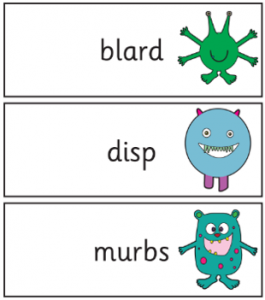
You could use some of the pseudo words in our list as practice words for a screening check or as part of a less formal assessment of a child's decoding ability.
Words Where Er Doesn't Act as a Digraph
This generally happens in multi-syllable words the letter pair is at the boundary between 2 syllables. Examples include:
beret berry Beryl cherry cleric Eric Erica erase erect erode error erupt heron feral ferret ferry merit merry peril serif sheriff very
hornerachargeturry.blogspot.com
Source: https://thereadingadvicehub.com/er-digraph-words-and-sounds/
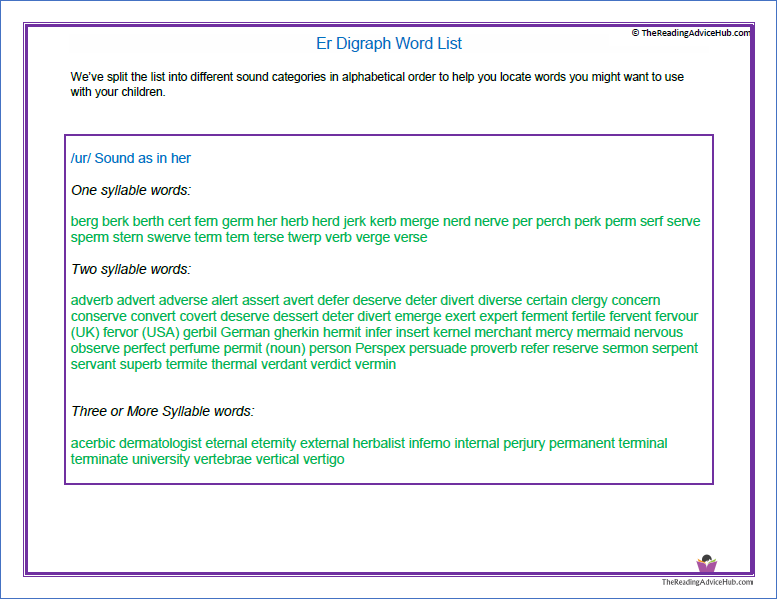
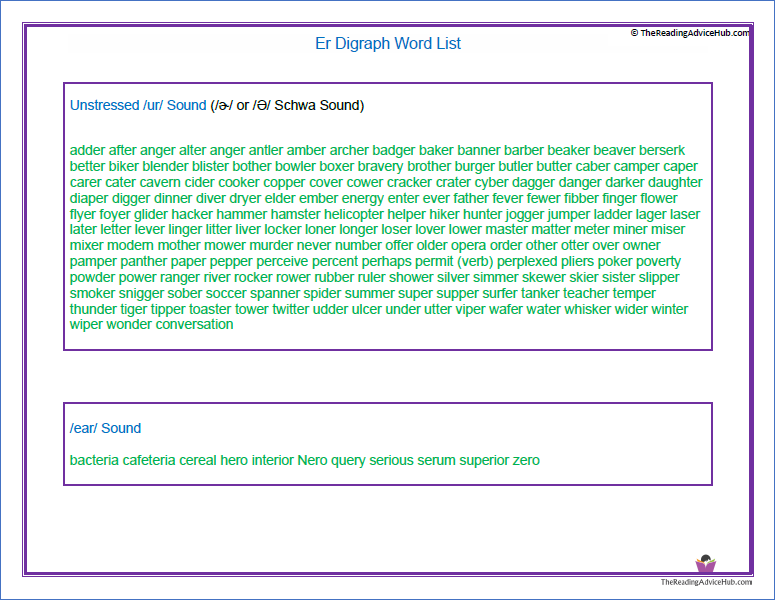
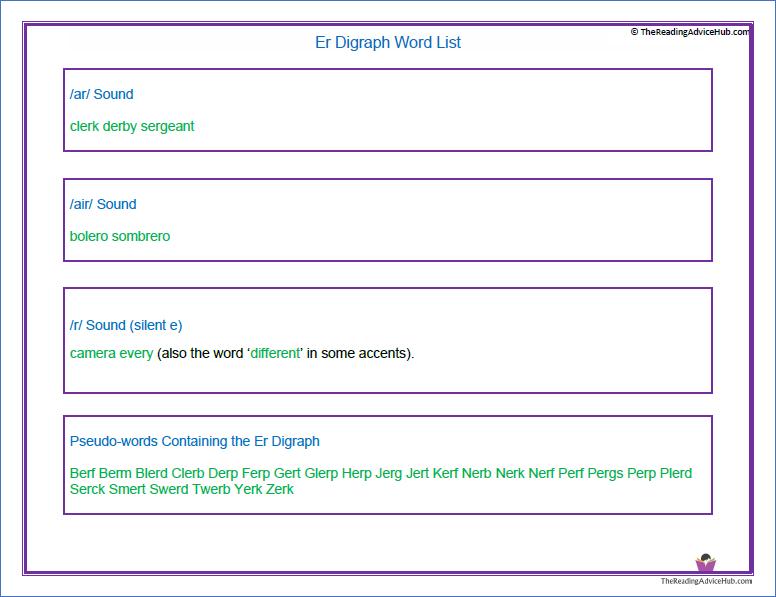
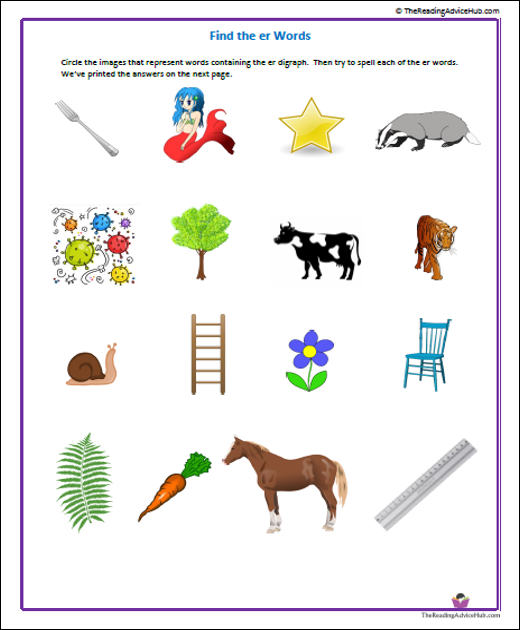
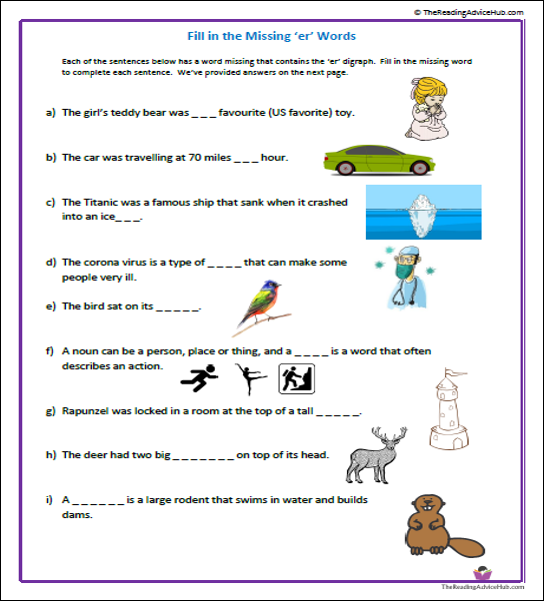

0 Response to "Easy Words to Read That Have er"
Enregistrer un commentaire